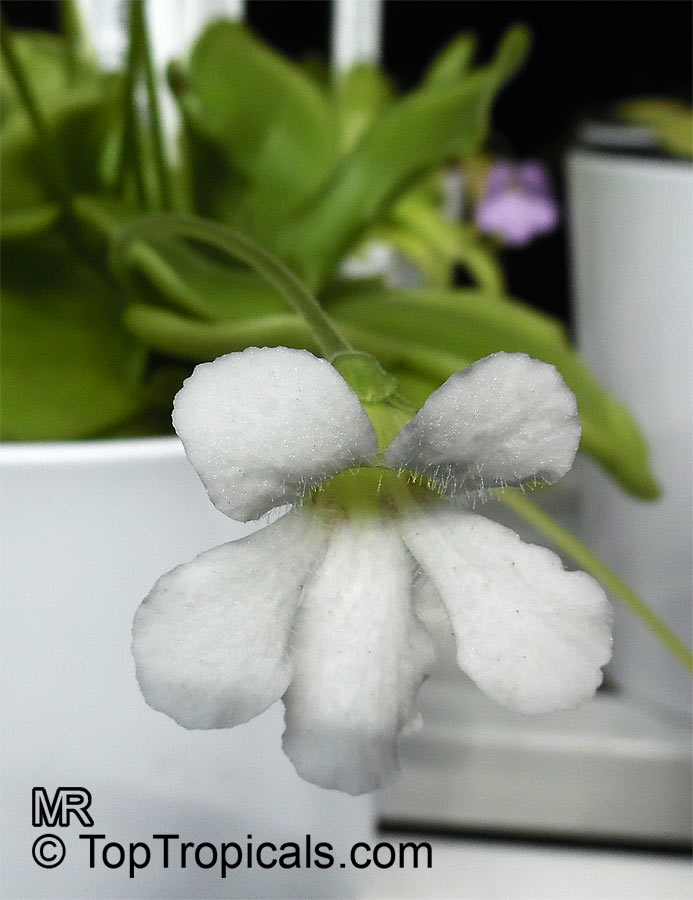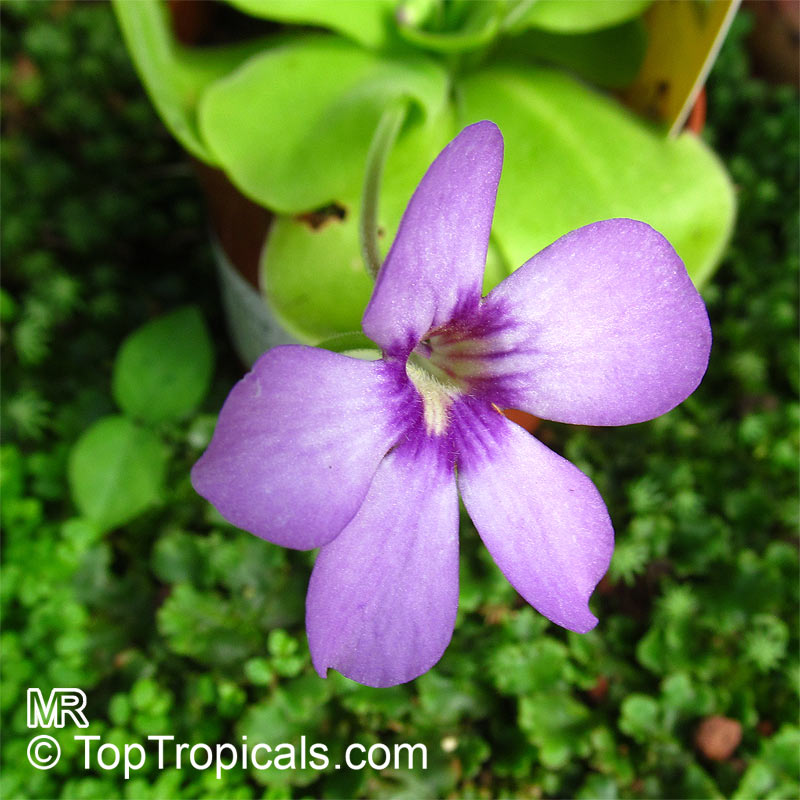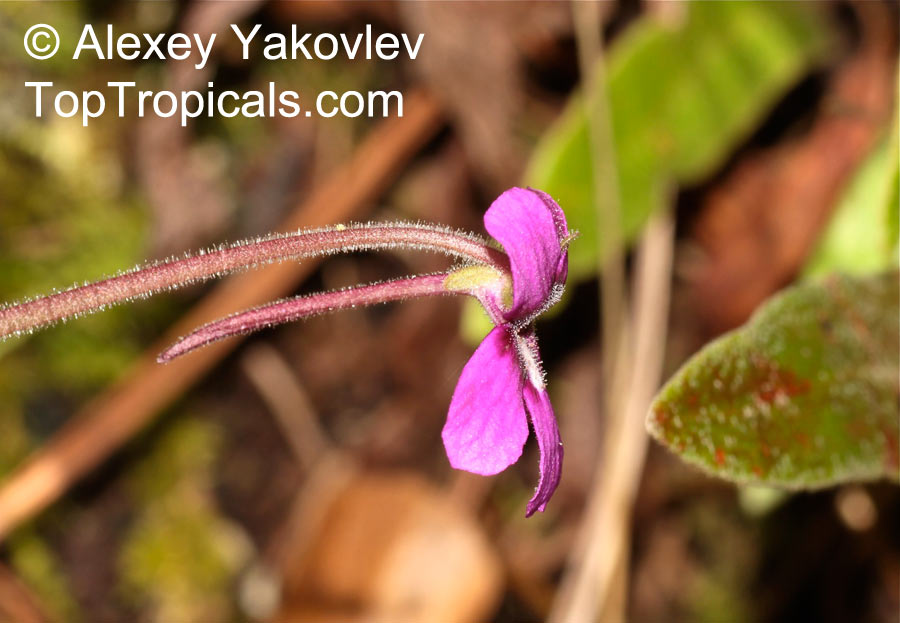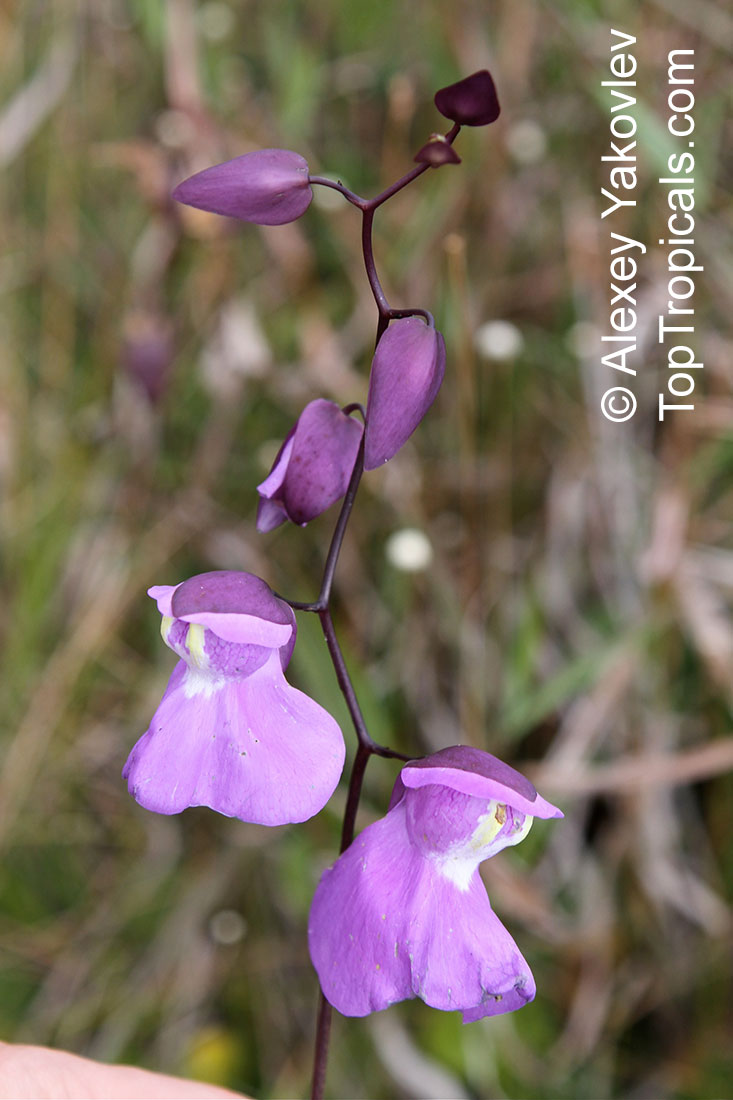Lentibulariaceae - Botanical Family
Top Tropicals Plant Encyclopedia
| Number of plants found: 2 |
Botanical name: Pinguicula sp.
Common name: Butterwort
Family: Lentibulariaceae







Pinguicula produce micro fine sticky droplets on its broad flat leaves much like flypaper and collects very small insects on its surface. Pinguiculas are also well noted for their large long lasting flowers that come on the plant at almost any time of the year.
Pinguiculas are a shade loving plant from cooler climates and are relatively easy to care for and multiply. They are ideally suited to growing in terrariums and window sills that are not too hot. They are easily grown with ferns and under shaded benches.
Keep out of direct sun. Stand in 2cm rainwater in growing season. Keep drier in winter and only water occasionally. Rosette will be more succulent. Keep above 7 C in winter.
Botanical name: Utricularia sp.
Common name: Bladderwort
Family: Lentibulariaceae
Origin: Worldwide










Utricularia is the largest genus of carnivorous plants with more than 220 species that occur throughout the world. They are found on every continent except for Antarctica. Some are terrestrial species found in moist-to-wet, often acid soils, and in sphagnum moss, while others are aquatic, preferring to be floating freely in quiet waters in ponds and ditches. Many terrestrial species in the tropics are epiphytic.The bladderworts present a rather unique morphology. First of all, the plants are entirely rootless -- completely giving up the normal plant way of obtaining nutrients from the root system. Also, the distinction between stem and leaf is often vague, especially in the aquatic species. The trapping mechanism, the bladder, is a modified leaf or a leaf division morphologically, in general conformity with all trapping structures found in carnivorous plants of other genera. The flowers are generally quite colorful and showy for both terrestrial and aquatic species, especially when seen in masses. Some of these flowers compete with those of orchids in their beauty.
Use link to repeat this search:
https://toptropicals.com/cgi-bin/garden_catalog/cat.cgi?search_op=and&keyword_op=and&language=e&family=Lentibulariaceae
&number=10&no_change_lang=1&user=tt&sale=1&first=0

































